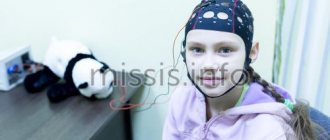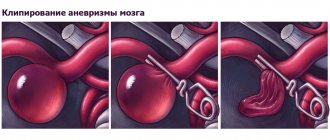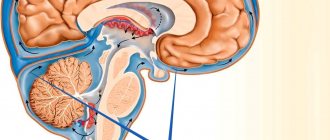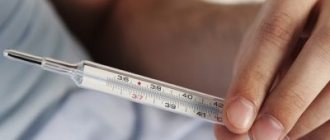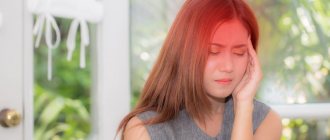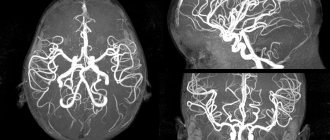What is BAK?
Bioacoustic correction (BAC) is an innovative method of influencing brain structures using a special computer program that can convert brain signals obtained from a person’s electroencephalogram into sound.
During the session, the patient literally listens to the “programmed music” of his brain. But the most important thing is that with the reverse effect of sound on the neurons of the brain, involuntary self-regulation of the body occurs, which can be observed in real time using an electroencephalogram. Bioacoustic brain correction combines the latest technologies of neurotherapy and biofeedback. Bioacoustic correction, being an effective, non-invasive and non-drug method of rehabilitation of patients used at the CORTEX medical center. It is aimed at restoring the functional state of the central nervous system and mobilizing the body’s natural reserves, helps to increase the effectiveness of medical rehabilitation in complex therapy with biophysical activation of neuromotor structures, and can be used independently for a number of diseases.
Is this method effective?
The effectiveness of the method has been confirmed:
- 25 years of scientific research at the Federal State Budgetary Institution “Research Institute of Experimental Medicine”, Northwestern Branch of the Russian Academy of Medical Sciences (FGBU “NIIEM” NW RAMS), Northwestern State Medical University named after. I.I. Mechnikov, State Institute for Advanced Training of Doctors of the Ministry of Defense of the Russian Federation, St. Petersburg State Pediatric Academy, Russian Scientific Center for Medical Rehabilitation and Balneology of the Ministry of Health of the Russian Federation;
- Clinical trials and medical practice at: State Research Institute of Emergency Medicine named after. N.V. Sklifosovsky, No. 2 FBU “3 TsVKG im. A.A. Vishnevsky Ministry of Defense of Russia", MAPO (St. Petersburg), State Autonomous Institution of the Republic of Tatarstan Emergency Hospital (Regional Vascular Center) Tatarstan and in a number of other leading clinics in Moscow and St. Petersburg;
- The research results are presented in scientific articles and defended in dissertations.
Alalia
Alalia
Alalia is a complex speech disorder. Alalia cannot be considered a separate defect; it is a general concept for a number of pathological disorders of motor speech, which are characterized by different patterns of manifestation and different localization in brain structures. The severity of alalia can also vary: from mild, when after the age of five the child still begins to speak, to severe, in which the teenager may remain mute until the age of 13.
Features of speech development in children with alalia
Alalik speech can develop in different ways. It happens that a child is silent for a long time, and then speech rapidly begins to develop and gradually improves. There is another option, when the child’s first words appear quite early, but speech remains inert and filled with agrammatisms for a long period.
Common to all manifestations is poverty of vocabulary, grammatical errors, distortion of words and difficulty in transitioning to coherent speech. In general, children with alalia are reluctant to communicate and show little speech activity. They can be negatively affected by any experience, new environment or new group of peers, which further inhibits speech. Monotony and inexpressiveness of speech utterances are also characteristic of alalia.
Causes of alalia
Pathologies of intrauterine development can lead to alalia: toxicosis of the pregnant woman, fetal hypoxia, trauma to the fetus as a result of accidents with the pregnant woman, infections, chronic diseases of the mother. The nature of the birth also matters: protracted or fleeting. Everything is important: whether the child received a birth injury, whether there was prematurity, whether instruments were used for obstetrics. In the first years of a child’s life, alalia can be caused by severe brain infections, genetic predisposition, exposure to anesthesia, etc. It is impossible not to note the so-called pedagogical neglect, when the child is simply not given much attention, there is little communication with him. Oddly enough, the possibility of alalia appearing in large families is higher than in those where there is only one child. It would seem that there should be more communication with brothers and sisters, but in practice this is not the case, because only communication between an adult and a child is a powerful stimulus for the development of speech.
Types of alalia
It is customary to distinguish three types of alalia:
- Motor alalia.
- Sensory alalia.
- Mixed alalia.
With motor alalia, there is either difficulty in sound reproduction with gross impairments, or difficulties in mastering the articulatory apparatus. Motor alaliks are distinguished by obviously weak development of gross and fine motor skills. Their behavior is also specific. These are often hyperactive children or, conversely, too inhibited. The vocabulary is poor, new words are remembered slowly and with difficulty. When communicating, children use short sentences; it is difficult to form coherent speech.
With sensory alalia, understanding of the meaning of speech addressed to the child is impaired. And the actual speech of a sensory alalik is a collection of fragments of words and sounds that do not carry any meaning. It is very difficult for others to understand her. To do this, children actively use gestures and facial expressions. Gross distortion of speech cannot but affect the formation of the personality of a child, who can be easily excited or inhibited, moreover, he quickly gets tired and cannot concentrate and maintain attention for a long time. A mixed, sensorimotor form of alalia is more common, since speech and movement analyzers are closely related.
Many children have difficulty mastering simple everyday skills and even at school are poor at using cutlery, scissors, and writing instruments.
Alalia treatment
Already at preschool age it is necessary to start working with alaliks: the earlier, the better. After all, even a slight lag in a child’s speech affects the intellectual development and spoils the character.
The work methodology is complex and includes both pedagogical and medical influences: classes with a speech therapist, physiotherapy, speech therapy massage. It is necessary to continue the development of mental functions (memory, attention, thinking).
Early onset, competent, systematic influence on all aspects of speech, an integrated approach, the use of modern methods of medical correction - these are the components of the success of this complex pathology.
Recently, the method of bioacoustic correction has become very popular in the treatment of alalia. It is based on the effect on brain structures of music-like sounds, the frequency characteristics of which coincide with the brain’s own activity. As a result, the hidden reserves of the brain are awakened. Bioacoustic correction helps children improve speech activity, as well as mitigate negative behavioral manifestations.
In what areas of medicine is BAC used?
- Regenerative medicine and rehabilitation
- Neurology
- Psychiatry
- Narcology
- Cardiology
- Professional activities (including personnel of special risk units)
- Special (correctional) pedagogy (including oligophrenopedagogy and speech therapy)
- Sport
What is the essence of the method?
The LHC method is based on the concept of involuntary self-regulation. The content of this concept is not the compensation of impaired physiological functions, but the activation of natural regulatory processes that are normally carried out involuntarily, but were suppressed as a result of an unfavorable combination of environmental factors, illness or individual personal characteristics. Activation of self-regulation processes is carried out by acoustic stimulation consistent with the current bioelectrical activity of the brain. The presentation of music-like sounds, the parameters of which are consistent with the indicators of the rhythmic structure of the EEG and synchronous with the events of bioelectrical activity of the brain, creates unique conditions for adaptive stimulation. This type of sensory stimulation, which combines elements of biofeedback, audiovisual influence and music therapy, allows you to activate natural self-regulation processes, which contributes to the effective restoration of the functional state of the central nervous system.
The LHC method activates the structures of the mesolimbic system when listening to music by synchronizing the acoustic impact with the endogenous activity of the brain.
Mechanism of influence: stimulation of brain structures responsible for the processes of motivation and reinforcement - the limbic system (primarily the hypothalamic nuclei, amygdolar-hippocampal complex, etc.)
What are the advantages of the LHC method?
- non-drug, non-invasive treatment of functional disorders of the central nervous system;
- no addiction, side effects and age restrictions;
- high efficiency proven by many years of use;
- compatibility and acceleration of other types of treatment (biophysical activation of neuromotor structures)
- reduction of drug load, for some nosologies the possibility of replacing drug treatment.
- Each LHC procedure is carried out under the control of EEG recording via 4 channels in on-line mode (review and indexometric analysis).
- after each procedure, it is possible to evaluate changes in various EEG parameters (indexometric, pattern, cross-correlation analyses).
How does LHC differ from classical biofeedback (BFB) methods?
- Possibility of use without age restrictions
- possibility of use in case of deficits in the cognitive and emotional-volitional spheres of mental activity
- complete and accurate display of EEG parameters in a sound image: - time-frequency - amplitude - spatial
- work in real time
- constant hardware conversion delay 20-30 ms
How does it work?
The sound image of the EEG becomes polyphonic in nature and has pronounced emotiogenic properties. The conversion occurs in real time with minimal delay. When recording EEG, four leads Fp1, Fp2, O1, O2 are used.
All signals are simultaneously but independently converted and presented to the patient through stereo headphones, with the side of presentation of the acoustic image corresponding to the lead side. The acoustic signal obtained in this way reflects the frequency-temporal and spatial parameters of the EEG, which contributes to high-quality monitoring of the functional state of the brain.
The peculiarity of the transformation is that the EEG signal is presented in the form of a complex sound image, in which the relationships of the main parameters of the BEA frequencies of the brain are preserved. Unlike well-known EEG-dependent feedback methods, the LHC technique does not single out narrow frequency ranges, but simultaneously displays the entire variety of EEG rhythms.
What is the essence of the therapeutic effect of exposure?
- restoration of the functional state of the central nervous system - normalization of electroencephalogram parameters
- normalization of psychophysiological and psychological indicators (improvement of psycho-emotional state, improved mood, increased activity, decreased emotional tension and fatigue, normalized sleep and appetite, decreased fixation on one’s condition, decreased indicators of neuroticism, depression, etc.);
- hemodynamic (central and autonomic regulation of the cardiorespiratory system, improvement of vascular reactivity, normalization of blood pressure, etc.);
- immunomodulatory;
- analgesic (tension headaches, functional headaches and anginal pains during angina pectoris and myocardial infarction, other types of pain); • metabolic-trophic;
- stimulating and restorative (stimulation of mental and speech development in children with delays in speech and psycho-speech development, effective restoration of speech and cognitive functions after organic brain damage, etc.)
What are the indications of the BAC method in pediatric neurology?
- Mental development disorders (mental retardation, mental retardation, autistic syndrome).
- Speech development disorders (dysarthria, dyslalia, OHP, alalia, dysgraphia, dyslexia).
- Attention deficit hyperactivity disorder.
- Neurosis-like disorders (tics, enuresis).
- Tension headaches. Migraine.
- Consequences of cerebrovascular accident, organic brain damage, traumatic brain injury.
- Hypoxemic-ischemic lesions of the central nervous system of perinatal origin
- Adaptation to school and preschool institutions.
- General health improvement of the body and psychoprophylaxis: increasing and maintaining the optimal level of adaptive capabilities of the body, the process of self-regulation.
What are the indications for the LHC method in adult neurology?
- Relieving “chronic fatigue” syndrome. Eliminating the effects of stress. Post-traumatic stress. "Loss Syndrome"
- Treatment of neurotic, neurological disorders. Treatment of mental disorders (anxiety syndrome, phobic syndrome (panic attacks), astheno-depressive syndrome). Treatment of emotional disorders: anxiety, restlessness, increased irritability, fatigue, decreased performance, internal tension, decreased mood. Treatment of sleep and appetite disorders.
- Vegetative-vascular disorders (both diencephalic in nature and parasympathetic crises).
- Consequences of stroke, organic brain damage, traumatic brain injury: restoration of cognitive functions and speech disorders, normalization of psychophysiological status.
What contraindications should you keep in mind?
- acute postoperative period;
- hypertensive crisis;
- acute infectious diseases;
- acute disorders of cerebral and spinal circulation;
- myocardial infarction in the acute period;
- acute and subacute inflammatory diseases of the brain and spinal cord, its membranes (myelitis, meningitis, etc.);
- acute bleeding.
Contraindications for performing LHC
- Acute infectious diseases
- Hypertensive crisis
- Early postoperative period
- Acute disorders of cerebral and spinal circulation in the acute and acute periods
- Myocardial infarction in the most acute and acute stages
- TBI, CTBI acute period
- Acute inflammatory diseases of the brain
- Acute hemorrhagic syndrome
- Mental illnesses in the stage of decompensation
- With caution - for epilepsy
How is the procedure performed?
Headphones are put on the child, and sensors are attached to his head that read EEG parameters. After this, he begins to hear acoustic waves, which are essentially converted electrical signals from the brain. Each LHC procedure is carried out under the control of EEG recording via 4 channels online (review and indexometric analysis). After the procedure, the specialist has the opportunity to evaluate changes in various EEG parameters.
The duration of the procedure is 15-25 minutes, while the procedure is comfortable and the patient does not experience any painful sensations.
A positive effect is often noted already during the procedures or within 1-1.5 months.
Recommended course: from 7 to 15 sessions of 15-25 minutes. It is advisable to repeat this treatment after 2-3 months.
The essence of the bioacoustic correction method - what is it?
All processes in the body are controlled by the brain - everyone knows this, even those who are not interested in medicine.
This is the “control center” of the body, and therefore the processes that occur in it. Having gained control over brain activity, you can partially or completely control some body functions. The most amazing thing about the LHC procedure is that the little patient does most of the work on his condition himself.
To begin with, an electroencephalogram (EEG) is done in the bioacoustic correction clinic - this is the basis of the entire method. Then, using a computer program developed specifically for conducting treatment sessions using a special technique, the information received is processed into a music file (an acoustic imprint of an encephalogram analysis) and given to the patient for listening.
Computer program for turning an encephalogram into music
The session takes place with headphones so that no other sound information except this one enters the brain. Then it’s all a matter of the unconscious. The child listens to the recording, and his brain, hearing “familiar” motives, perceives them perfectly, beginning self-healing and normalization of processes. There is nothing supernatural here, only standard patterns of the central nervous system’s response to its own vibrations.
The method is also of great value to researchers and doctors. By receiving recordings after LHC, doctors can assess the functional state of the patient’s brain at a completely new level.
This does not detract from the importance of visual tests, cytological tests or the encephalogram itself in its original form, it simply adds another way of perceiving information, which for an intelligent specialist is only help in drawing up a complete picture of a disease or disorder.
The BAC method has a beneficial effect on almost all disorders in the body, simply normalizing the functioning of the brain, which could be disrupted as a result of the destructive effects of a disease, congenital or acquired.
Systematic sessions significantly improve the general condition, relieve most of the symptoms (due to the “distraction” of the brain from unnecessary neural signals), with the help of them great progress in treatment is achieved, especially if BAC is combined with other methods of therapy. The improved results can be clearly seen in the EEG readings, which become more and more favorable after the sessions.
The main positive aspects of bioacoustic correction:
- No discomfort. The procedure is painless, does not have irritating factors for most children (the sound file, as expected, is perceived by the brain as natural background noise of the body) and does not last long, no more than 15-25 minutes. Even parents of the smallest or uncooperative children do not experience any particular difficulties.
- The effect does not require direct intervention in the body. For some young patients, the medicinal or surgical part of therapy is contraindicated - then parents turn to physiotherapists, whose methods are in no way inferior to others, more radical.
- Available to everyone. There are no age thresholds for LHC - the procedure is harmless and can be performed on children of any age. No side effects were noticed over a long period of using the method.
- Reliability. Despite the fact that at first glance the bioacoustic correction method looks unconvincing, there are many children whose disorders have changed to positive dynamics after sessions, and medical scientists have repeatedly proven the effectiveness of the method (you can study research papers here). LHC has been tested by the experience and careers of many specialists.
Mistrust usually disappears after the first positive results, and parents of young patients are happy to continue therapy until complete recovery, if this is possible in their clinical case.
If the therapy is supportive in nature, it still has a lot of benefits - the child calms down, his condition stabilizes. He becomes less nervous and more receptive to the surrounding reality. The technique is very effective if the reason for treatment is, for example, autism spectrum disorder.



